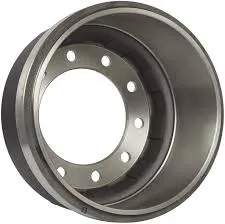
-
 Afrikaans
Afrikaans -
 Albanian
Albanian -
 Amharic
Amharic -
 Arabic
Arabic -
 Armenian
Armenian -
 Azerbaijani
Azerbaijani -
 Basque
Basque -
 Belarusian
Belarusian -
 Bengali
Bengali -
 Bosnian
Bosnian -
 Bulgarian
Bulgarian -
 Catalan
Catalan -
 Cebuano
Cebuano -
 Corsican
Corsican -
 Croatian
Croatian -
 Czech
Czech -
 Danish
Danish -
 Dutch
Dutch -
 ភាសាអង់គ្លេស
ភាសាអង់គ្លេស -
 Esperanto
Esperanto -
 Estonian
Estonian -
 Finnish
Finnish -
 French
French -
 Frisian
Frisian -
 Galician
Galician -
 Georgian
Georgian -
 German
German -
 Greek
Greek -
 Gujarati
Gujarati -
 Haitian Creole
Haitian Creole -
 hausa
hausa -
 hawaiian
hawaiian -
 Hebrew
Hebrew -
 Hindi
Hindi -
 Miao
Miao -
 Hungarian
Hungarian -
 Icelandic
Icelandic -
 igbo
igbo -
 Indonesian
Indonesian -
 irish
irish -
 Italian
Italian -
 Japanese
Japanese -
 Javanese
Javanese -
 Kannada
Kannada -
 kazakh
kazakh -
 Khmer
Khmer -
 Rwandese
Rwandese -
 Korean
Korean -
 Kurdish
Kurdish -
 Kyrgyz
Kyrgyz -
 Lao
Lao -
 Latin
Latin -
 Latvian
Latvian -
 Lithuanian
Lithuanian -
 Luxembourgish
Luxembourgish -
 Macedonian
Macedonian -
 Malgashi
Malgashi -
 Malay
Malay -
 Malayalam
Malayalam -
 Maltese
Maltese -
 Maori
Maori -
 Marathi
Marathi -
 Mongolian
Mongolian -
 Myanmar
Myanmar -
 Nepali
Nepali -
 Norwegian
Norwegian -
 Norwegian
Norwegian -
 Occitan
Occitan -
 Pashto
Pashto -
 Persian
Persian -
 Polish
Polish -
 Portuguese
Portuguese -
 Punjabi
Punjabi -
 Romanian
Romanian -
 Russian
Russian -
 Samoan
Samoan -
 Scottish Gaelic
Scottish Gaelic -
 Serbian
Serbian -
 Sesotho
Sesotho -
 Shona
Shona -
 Sindhi
Sindhi -
 Sinhala
Sinhala -
 Slovak
Slovak -
 Slovenian
Slovenian -
 Somali
Somali -
 Spanish
Spanish -
 Sundanese
Sundanese -
 Swahili
Swahili -
 Swedish
Swedish -
 Tagalog
Tagalog -
 Tajik
Tajik -
 Tamil
Tamil -
 Tatar
Tatar -
 Telugu
Telugu -
 Thai
Thai -
 Turkish
Turkish -
 Turkmen
Turkmen -
 Ukrainian
Ukrainian -
 Urdu
Urdu -
 Uighur
Uighur -
 Uzbek
Uzbek -
 Vietnamese
Vietnamese -
 Welsh
Welsh -
 Bantu
Bantu -
 Yiddish
Yiddish -
 Yoruba
Yoruba -
 Zulu
Zulu
Comparing Drum Brakes and Disc Brakes for Optimal Vehicle Performance and Safety
Drum Brakes vs. Disc Brakes A Comparison
When it comes to vehicle braking systems, the choice between drum brakes and disc brakes is a critical consideration for manufacturers and consumers alike. Each system has its advantages and drawbacks, making them suitable for different applications. Understanding these differences helps drivers make informed decisions about their vehicles.
Drum Brakes
Drum brakes have been around for a long time and are still commonly found on many vehicles, particularly older models and some budget-friendly cars. The design includes a drum that rotates with the wheel and brake shoes that press against the inner surface of the drum to create friction. One of the primary benefits of drum brakes is their effective braking force under low-speed conditions. They generally require less space than disc brakes and are often less expensive to manufacture, making them an economical choice for vehicle manufacturers.
However, drum brakes have some drawbacks. They are prone to overheating, especially during prolonged braking, which can lead to brake fade. This phenomenon significantly reduces the braking efficiency when they are needed the most, such as on steep descents or in heavy traffic. Additionally, drum brakes tend to accumulate moisture and debris more easily, which can lead to corrosion and decreased performance over time. As a result, many modern vehicles are moving away from drum brakes in favor of more efficient alternatives.
drum brakes or disc brakes

Disc Brakes
On the other hand, disc brakes have become increasingly popular in modern vehicles, especially in performance and luxury cars. This system consists of a brake disc that is mounted on the wheel and calipers that house the brake pads. When the brakes are applied, the calipers squeeze the pads against the disc, producing friction. The advantages of disc brakes are numerous. They provide better heat dissipation, which significantly reduces the risk of brake fade. This makes them more reliable in high-speed and heavy-load situations.
Disc brakes also tend to offer better overall performance, including shorter stopping distances and improved response. They are generally easier to inspect and maintain, as the components are more accessible than those found in drum brake systems. Moreover, they are less affected by moisture and debris, resulting in more consistent performance over time.
Conclusion
In summary, both drum brakes and disc brakes have their place in automotive design. Drum brakes are cost-effective and suitable for lower-speed applications, but they come with limitations related to heat dissipation and maintenance. Conversely, disc brakes provide superior performance and reliability but tend to be more expensive and may take up more space. Ultimately, the choice between drum and disc brakes depends on the specific needs of the vehicle and its intended use. As automotive technology continues to evolve, the shift toward disc brakes is likely to continue, driven by the demands for better safety and performance in modern vehicles.
-
What Are Drum Brakesព័ត៌មានJul.07,2025
-
Understanding Brake Drum Materialព័ត៌មានJul.07,2025
-
Semi-Trailer Brake Drum: A Key Component for Extreme Loads and Long-Distance Transportព័ត៌មានJul.07,2025
-
Drum Brake Pads for Saleព័ត៌មានJul.07,2025
-
Brake Drums for Saleព័ត៌មានJul.07,2025
-
Brake Drum Manufacturerព័ត៌មានJul.07,2025
-
Aluminum Brake Drums: The Future of High-Performance Carsព័ត៌មានJul.07,2025
